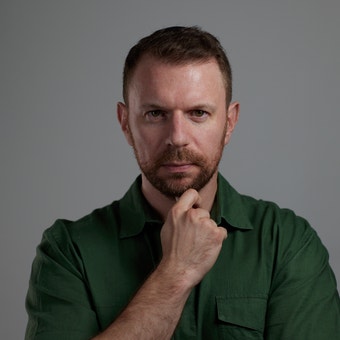The war raging in Ukraine is certainly being waged with guns and bullets, but it’s also being fought with a weapon just as powerful: propaganda. With so much disinformation (and accusations about disinformation), it’s clear that this is a moment when transparency and accountability have never been more important.
Despite this, one of the world’s most influential news sources, the New York Times, has to this day maintained a cover-up about its own historic reporting on Ukraine. The key to this cover-up is a Pulitzer Prize awarded to the Times for its own campaign of Ukraine-related disinformation. It’s time for the newspaper return that ill-gotten prize.
Most of us have heard about the infamy of Walter Duranty, the New York Times Russia correspondent who (so the story goes) went "rogue" by denying the existence of a devastating famine in Ukraine between 1932 and 1933.
RUSSIA INVADES UKRAINE: LIVE UPDATES
Duranty—famous for his callous quip about the Russian revolution that "you can’t make an omelette without breaking eggs"—went so far as to deny the reporting of other reporters who knew there was a famine. One of those reporters was the brave Gareth Jones, who was likely executed by the KGB for his truth-telling. Duranty, for his part, was awarded his Pulitzer for his "dispassionate, interpretive reporting of the news from Russia."

FILE PHOTO: The New York Times building is seen in Manhattan, New York, U.S., August 3, 2020. (REUTERS/Shannon Stapleton/File Photo)
The reality is that the "famine" that rampaged through Ukraine in the early 1930s was a campaign of genocide perpetrated by Stalin against land-owning peasants that would eventually kill an estimated 5-7 million people. But, just as importantly, far from being a rogue or "slovenly" reporter (as the New York Times publisher and patriarch would later allege), Duranty was a brilliant journalist who had firsthand knowledge of the crime Stalin’s Russia was perpetrating against Ukrainian civilians.
Why would Duranty lie? The answer is as simple as it is damning: he was instructed by his bosses at the New York Times to do just that.
As I show in my book on the Times, "The Gray Lady Winked," on a trip to the U.S. embassy in Berlin in the spring of 1931 Duranty made a confession to a State Department officer so stunning that the officer wrote it down verbatim and entered it into U.S. government record: "‘In agreement with the New York Times and the Soviet authorities,’ [Duranty’s] official dispatches always reflect the official opinion of the Soviet government and not his own."
CLICK HERE TO GET THE OPINION NEWSLETTER
Though it seems like a shocking anomaly, in reality this was part of a deep pattern of communist sympathizing at the Times in the early 1930s. The newspaper was even instrumental in brokering formal U.S. recognition of the then-nascent Soviet government. (The Times’ Russia man was the only person to receive a standing ovation at the gala event celebrating this breakthrough, attended by the new American and Soviet ambassadors among hundreds of elites.)
For decades, Ukrainian-Americans like those who staff the U.S. Committee for Ukrainian Holodomor-Genocide Awareness have called on the Times to do the right thing and return the Pulitzer. But for just as long the paper has refused.
CLICK HERE TO GET THE FOX NEWS APP
In 2003, the Times hired a "consultant," a historian, to advise it on what to do. Big surprise: the historian said it should give the prize back. But the Times’ publisher refused, saying to do so—to correct the record—would feel to him too much like a Soviet airbrushing of history.
For the past five years, the Times has run an ad campaign based on the concept that "Truth matters." It’s time for the paper to show the world that it means it and drop its false narrative on Ukraine, first by returning the Duranty Pulitzer and then by conducting an open and honest investigation what really happened with this journalistic breakdown—and why.


